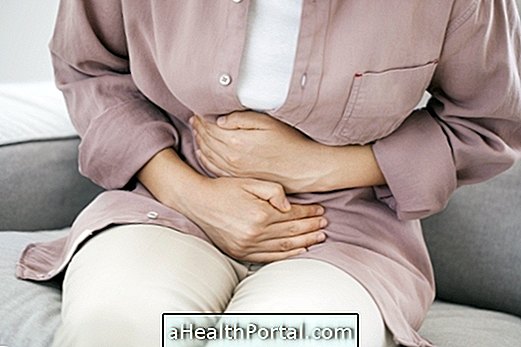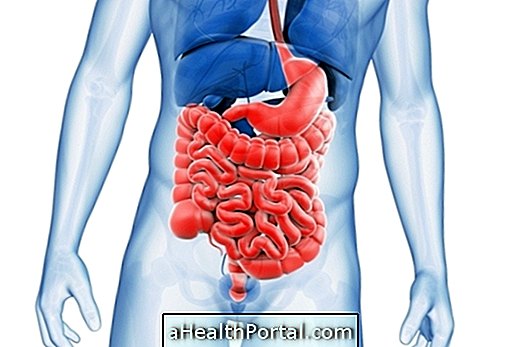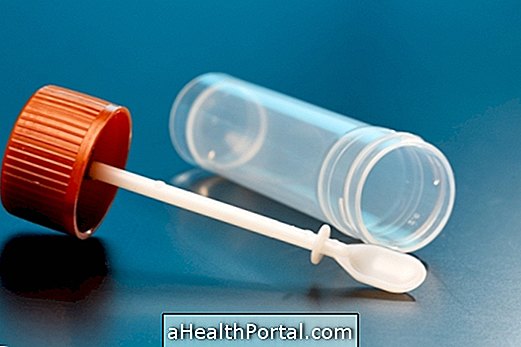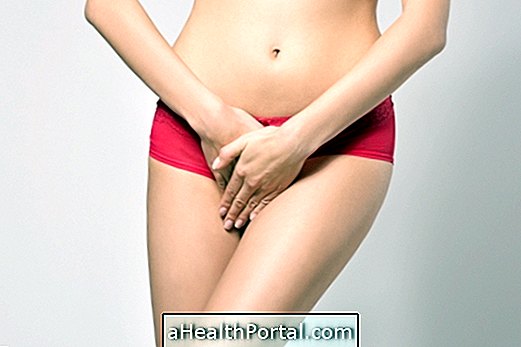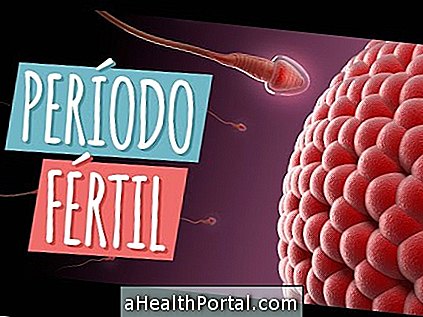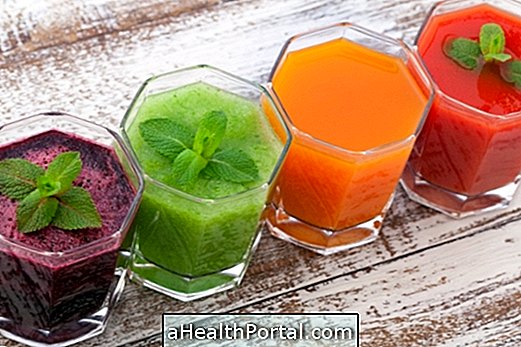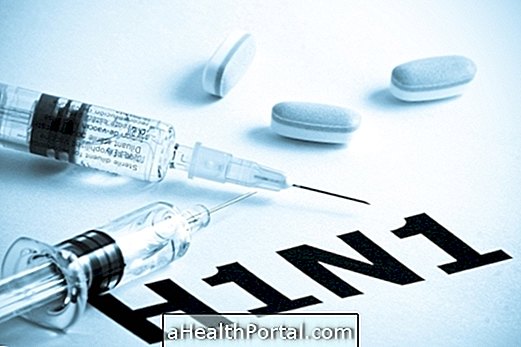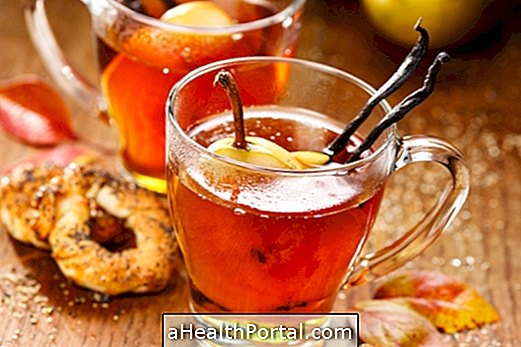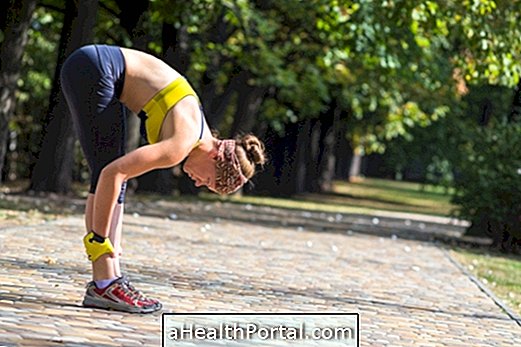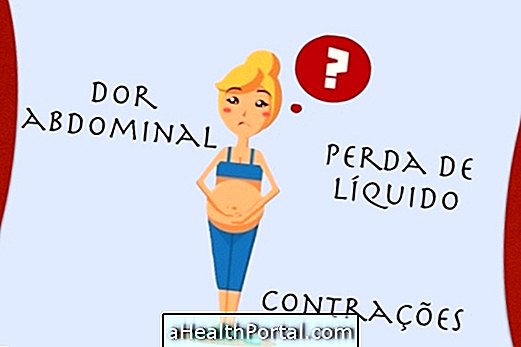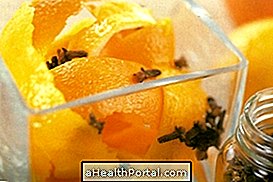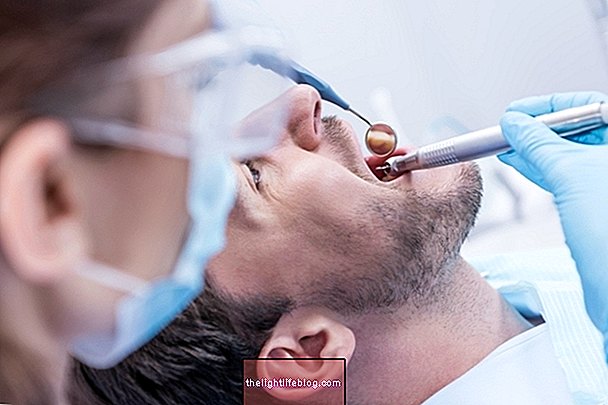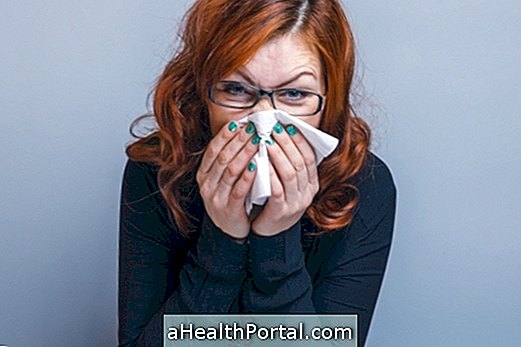Gastrostomy, also known as percutaneous endoscopic gastrostomy or PEG, consists of placing a small flexible tube, known as a tube, from the skin, directly to the stomach, to allow feeding in cases in which the oral route can not be used.
Thus, the placement of a gastrostomy is usually used in cases of:
- AVC;
- Cerebral hemorrhage;
- Cerebral palsy;
- Tumors in the throat;
- Amyotrophic lateral sclerosis;
- Severe difficulty to swallow.
Some of these cases may be temporary, such as in a stroke, in which the person uses the gastrostomy until they can feed again, but in others it may be necessary to keep the catheter for several years or even for a lifetime.
This technique may still be used temporarily after surgeries, especially when involving the digestive or respiratory tract, for example.
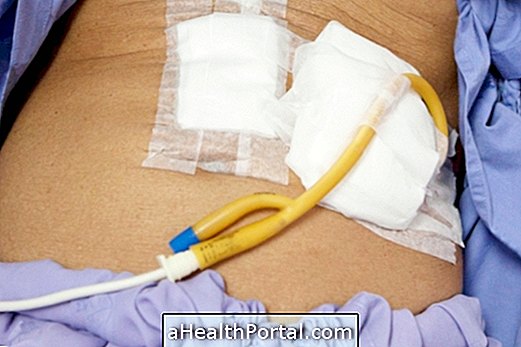
9 steps to feed through the probe
Before feeding a person with a gastrostomy tube, it is very important to place the patient seated or with the head of the bed elevated, so that food can not rise from the stomach into the esophagus, causing a heartburn. Then, one should follow the step-by-step:
- Examine the tube to make sure there are no creases that could impede the passage of food;
- Close the tube, using the clip or bend the tip, so that air does not enter the tube;
- Open the probe cover and place the filled syringe with 50 to 60 mL of water;
- Remove the clip or unfold the tip of the probe, always with the syringe inserted in the tube;
- Push the water slowly into the catheter, but stop if pain or pressure comes on, and notify the doctor or a nurse;
- Double-fold the probe tip or close the tube with the clip, and then withdraw the syringe;
- Fill the syringe with the chopped food, in the amount of 50 to 60 mL;
- Repeat the steps to close the tube and place the syringe on the probe, being careful not to leave the tube open;
- Push the syringe plunger carefully, slowly pushing the food into the stomach. Repeat as necessary until the amount recommended by the nutritionist is given.
After administering all the food through the probe, it is important to wash the syringe and fill with 50 mL of water, returning it through the probe to wash it and prevent the pieces of food from accumulating, blocking the tube.
These care are very similar to those of the nasogastric tube, so watch the video to observe how to always keep the tube closed, preventing air from entering:

How should the food be?
The food should always be well ground and also not contain very large pieces, so it is recommended to strain the mixture before placing it in the syringe. The dietary plan should always be directed by a nutritionist to ensure that there are no shortages of vitamins and therefore, after placement of the tube, the doctor can refer you to consultations with the nutritionist. Here are some suggestions on how the probe power should be.
Whenever it is necessary to administer medication, the tablet should be thoroughly crushed and mixed in the food or water to be administered. However, it is advisable not to mix medications in the same syringe, as some may be incompatible.
How to take care of the gastrostomy wound
In the first 2 to 3 weeks the gastrostomy wound is treated by a nurse in the hospital because more care is needed to avoid infection and to evaluate the site constantly. However, after being discharged and returning home, some care must be taken with the wound to prevent irritation of the skin and some discomfort.
The most important care is to keep the place always clean and dry, so it is advisable to wash the area at least once a day with warm water, a clean gauze and neutral pH soap. But it is also important to avoid very tight clothing or put creams with perfumes or chemicals in place.
When washing the area of the wound you should still observe the skin to ensure that there are no signs of infection, such as redness, swelling or pain to the touch, for example. If this happens, you should go to the hospital or tell the doctor.
